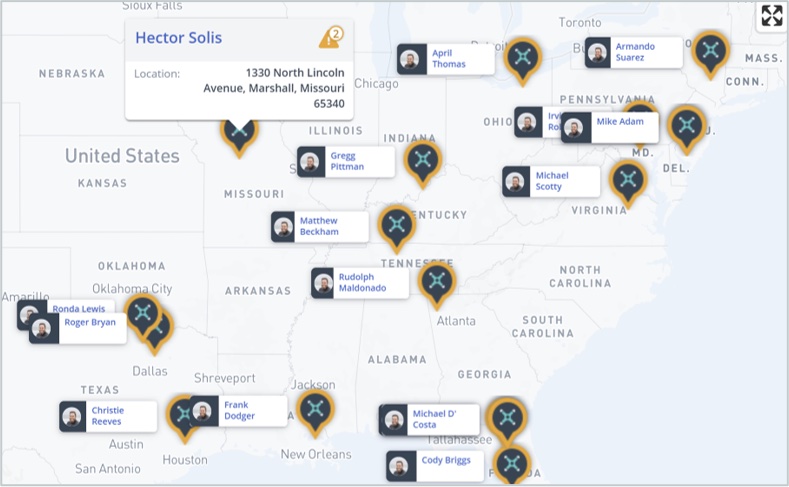It’s harder and harder to find drivers today. With increased regulations and volatile markets, what used to be a profession of wanderlust and freedom of the road is struggling to attract top driving talent. And this has been going on for years. In 2005, the American Trucking Association (ATA) argued that “firms hauling freight face a shortage of truck drivers.”
According to the U.S. Department of Transportation, as of April 2020, the number of for-hire carriers on file with the Federal Motor Carrier Safety Administration totaled 928,647. Private carriers totaled 799,342, and other motor carriers that do not specify their segment or checked multiple segments totaled 84,763. The DOT reports that 3.6 million truck drivers were employed in 2019, up from 1.7% in 2018. Heavy and tractor-trailer truck drivers’ employment expects to grow only two percent between 2019 and 2029, which still means over two million truck driver jobs.
The economy depends on truck drivers to move freight; as demand for goods grows, especially as more people order online for fear of the coronavirus, more truck drivers are needed. With projections for a more robust U.S. economy and growth, more and more truck drivers will be required to deliver freight, either directly to consumers or manufacturing plants, distribution centers, and retail outlets.

How to Find Truck Drivers
Recently, Axele hosted a webinar about hiring truck drivers using a predictive hiring methodology that unlocks a broader talent pool, improves driver retention, and streamlines the hiring process. An online assessment starts the operation where respondents are scored based on fewer accidents, better customer satisfaction, and high job success. High-value candidates are then pursued. At the same time, lower-ranking applicants are avoided, so you don’t waste time.
The best drivers are those that take effective, evasive action to avoid accidents, take responsibility for work assets, maintain self-control in difficult and stressful situations, provide excellent communication and customer service, respect customer regulations and safety procedures, and demonstrate pride in being a truck driver. The paycheck of the best drivers is tied to your company’s success. When you hire great drivers, your entire operation gets better.
Once you’ve hired the best drivers, you need to make sure that you use the best driver for the trip. Technology helps here in the form of an intelligent transportation management system (TMS).
Intelligent TMS
An intelligent transportation management system leads to an optimized transportation plan. These TMS systems feature smart load selection, trip planning, driver selection, and tour planning to lower costs by 30 to 40 percent, improve efficiencies and productivity, and increase customer satisfaction.
An optimized TMS also helps trucking firms choose the most profitable loads and shows the best loads for drivers, taking into account their hours of service and personal preferences. It employs features like driver pay modules, ELD connections, a live dispatch board for maximum fleet flexibility, and asset and driver management functions.
These features in an intelligent TMS help combat the driver shortage:
- Smart load matching leads to more profitable loads. It helps to evaluate each driver and look at the load detail, see where the driver is located near the load, and then incorporate hours of service and see the load’s profit. The system considers thousands of potential shipments from load boards, inserts these into the driver’s route, assesses whether this load can be carried by the driver, and calculates the revenue per mile or revenue per day for the driver. The system then recommends the best loads for carriers based on all this information.
- Smart trip planning generates accurate trip plans for drivers that meet hours of service restrictions and provide more precise arrival times. The TMS generates an hour-by-hour plan for the driver considering available work hours, pickup and delivery time windows, travel times, fuel stops, rest stops, and weigh stations. As each driver moves on the road, the trip plan and estimated arrival time are automatically updated.
- Smart driver selection assigns the best drivers to loads using hours of service data. Drivers need to be selected based on what trucks they have experience driving. Hours of Service regulations for the driver need to match the load. For example, if a driver has operated for 11 hours in a day, the driver cannot take another trip that day and must rest for at least 8 hours. But if you have a load that requires him to drive 6 hours, then realistically, he has an additional 5 hours of driving he can do for the day. Do you have another load he can pick up and complete before his hours of service limit kicks in?
Helping Drivers Get Paid Faster
Improving driver’s pay makes the job more attractive, but sometimes truck drivers face challenges getting paid. Technology can help. By integrating a TMS with a factoring company, truck drivers can get paid quicker. The factoring company typically pays clients within 24 hours of receiving a freight bill. When the TMS integrates with a factoring company, carriers can submit invoices without ever leaving the TMS. This connection allows carriers to sync customers with one click, send invoice details with supporting documents to the factoring portal in seconds, and automatically create invoices populated with all the relevant information.
Freight factoring companies advance payments to carriers, giving them immediate access to cash. The carriers can then pay their drivers faster. Shippers or freight brokers pay the factoring company 30 to 90 days later. With faster payment, drivers get paid within days, making it easier for them to pay their bills.
Smart TMS solutions can help you recruit and retain the best drivers by increasing their earning potential through more miles, incorporating their preferences into their weekly schedules, getting them paid quicker with faster driver settlement and integration with factoring companies, supporting team driving scenarios, and making their lives easier through mobile workflows and improved communication.

